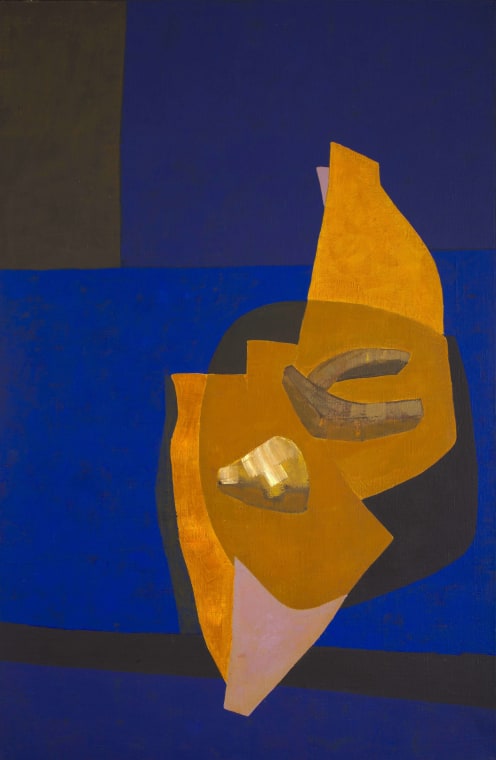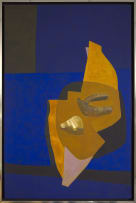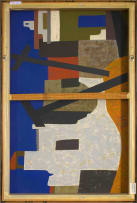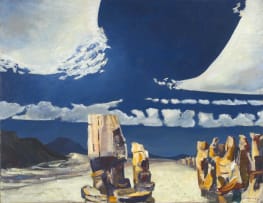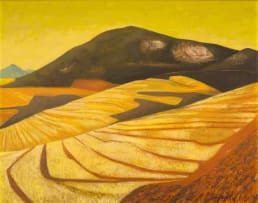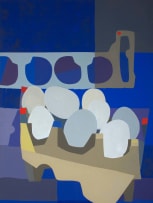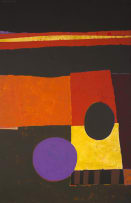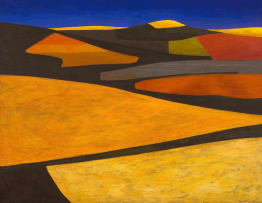19th Century, Modern, Post-War and Contemporary Art, Decorative Arts, Jewellery and Wine
Live Virtual Auction, 11 - 13 April 2021
19th Century, Modern, Post-War and Contemporary Art
Incl. Buyer's Premium & VAT
About this Item
signed and dated 70
Notes
Erik Laubscher established his reputation with his confident still lifes of the 1950s. Throughout his long career and its many stylistic deviations he would return to the challenge of rendering objects in space. This trio of vibrant works - lot 613 and lot 614 are from 1970, and lot 612 is from 1979 - derive from his confident middle period. The composition of these lots owes a great deal to formal innovations Laubscher developed while painting the Cape's natural landscapes in the later 1960s. The artist strove to portray the essential characteristics of his subjects using flattened perspectives, simplified forms and expressive bands of undifferentiated colour. The simplification of the formal elements of his compositions into what Esmé Berman characterised as "hard-edge undulating zones" produced an expanded sense of space.1 Laubscher wanted to exceed the bounds of the frame. To this end he continued painting on the side of his stretched canvases. He also experimented with new materials, in 1964 opting to switch from oils to acrylic. "With oils I found the predominance of texture defeating the way I wanted to convey objective space, they flatten the painting too much," he explained. "Acrylics are water soluble, you can work much quicker with them, and much more smoothly."2 The assuredness with which he laid down the large areas of undifferentiated colour in these lots, chiefly blue, orange, red and black, is thrilling. The outcome is a series of immersive and sensual descriptions of everyday forms. Laubscher's wit is evident. His juxtaposition of eggs and gasket, for example, is atypical for a genre characterised by its familiar repertoire of things.
- Esmé Berman (1993) Painting in South Africa. Cape Town: Southern Books, page 216.
- Stephen Gray (1970) 'Erik Laubscher and Landscape, Lantern, March, page 19.
Provenance
Property of a Collector.
Literature
Heine Toerien and Georges Duby (eds) (n.d.) Our Art 3, Pretoria: Foundation for Education, Science and Technology, illustrated on page 109, figure IV.
